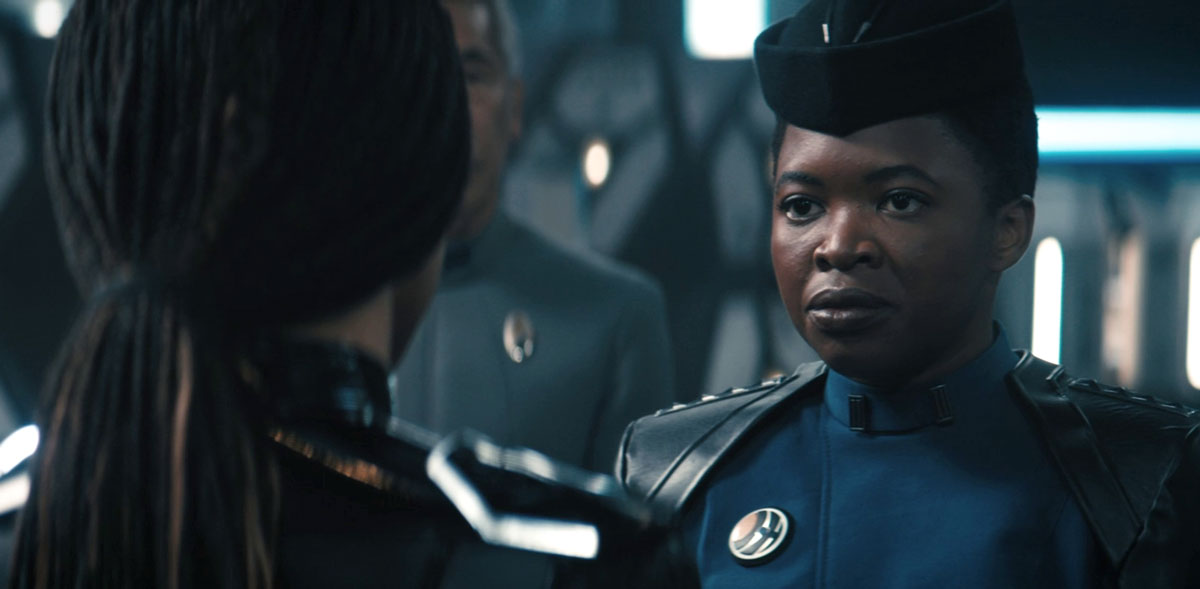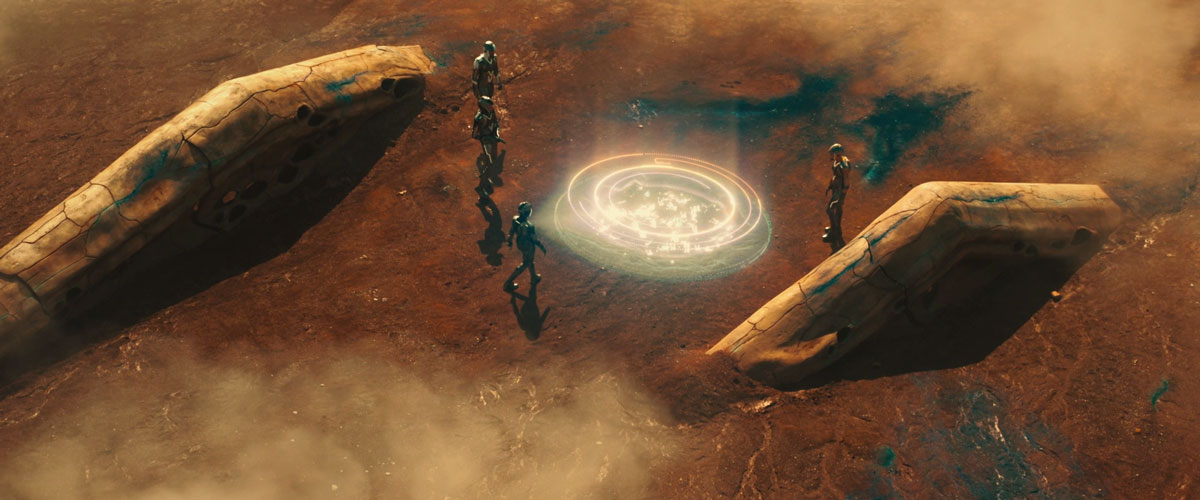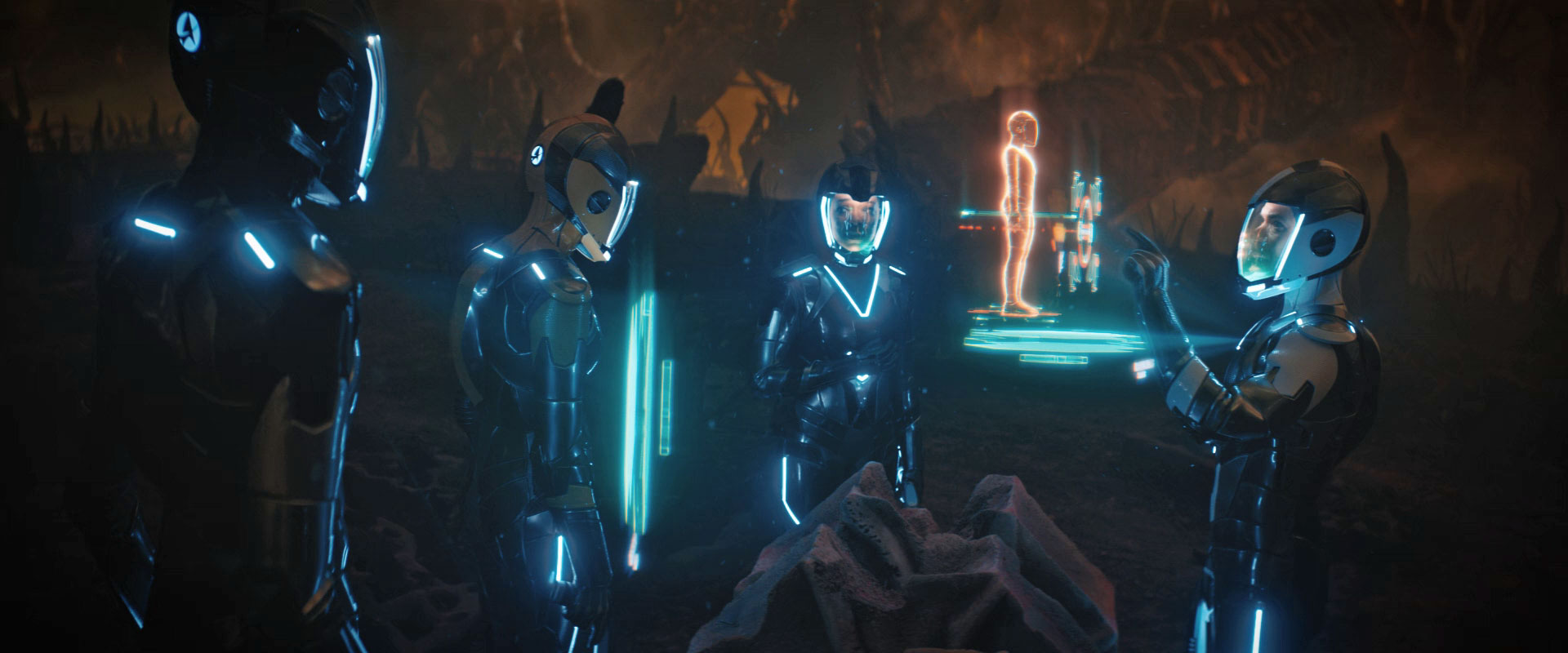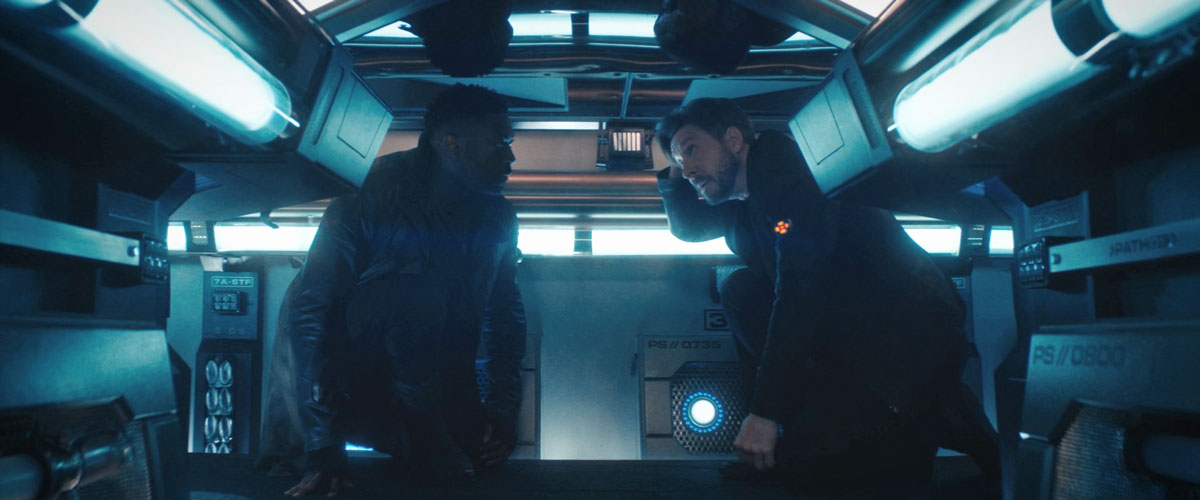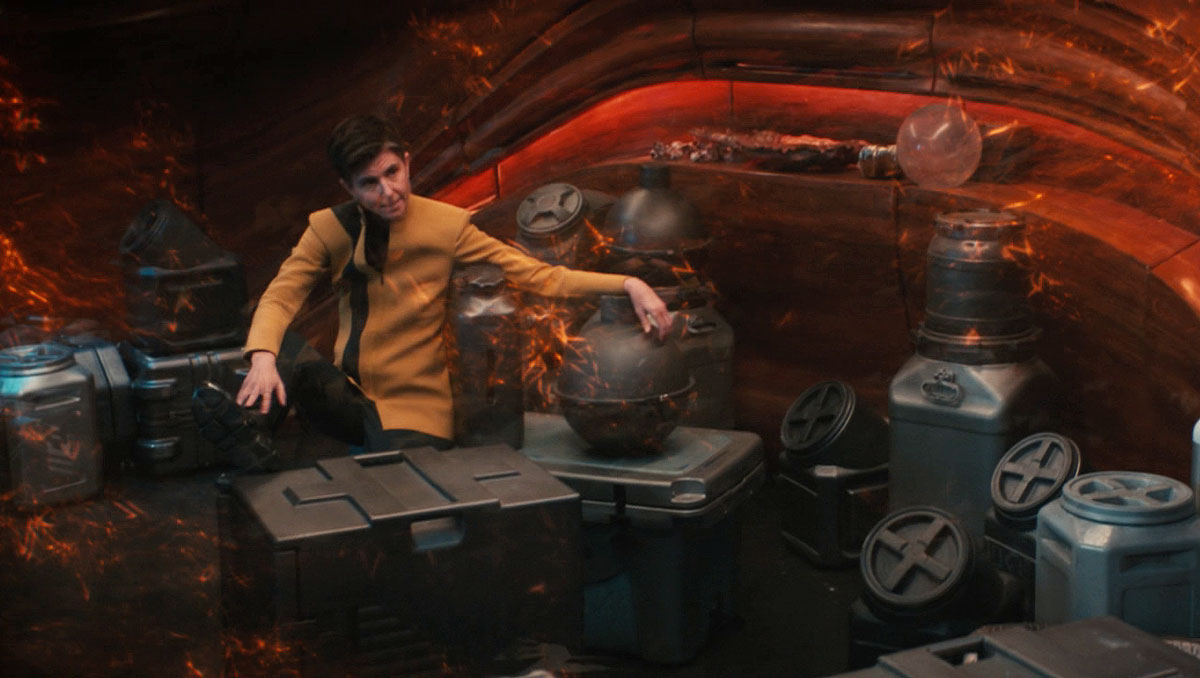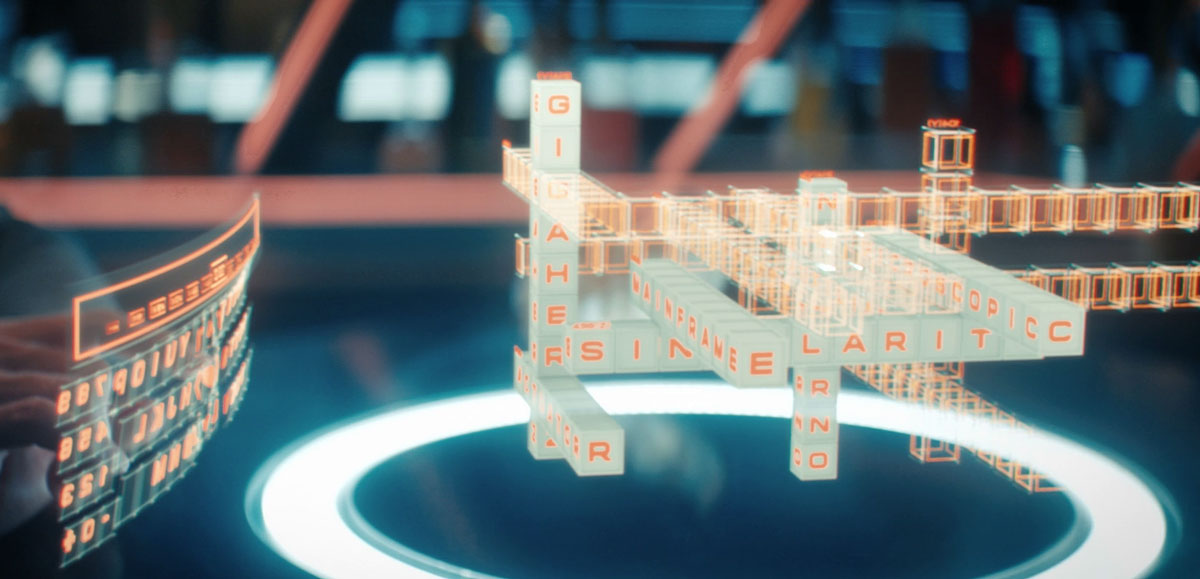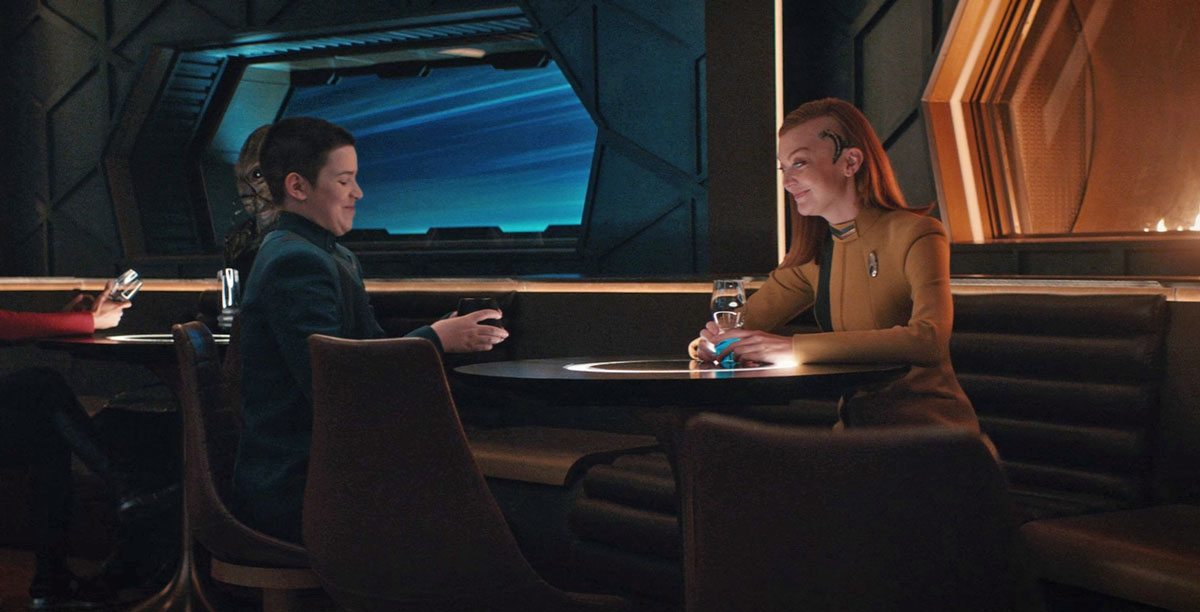In a season that has spent so much of its runtime teasing the identity and motives of Species 10-C, “Rosetta” finally feels like significant progress toward a satisfying conclusion — but this isn’t because of what happens in this episode, but how.
Despite being right on 10-C’s doorstep, as it were, Captain Burnham (Sonequa Martin-Green) determines that instead of leaping straight for the hyperfield behind which 10-C presumably lives, the Discovery crew first ought to explore a strange planet existing just outside of it.
Not everyone is happy about this detour, and United Earth’s Captain Ndoye (Phumzile Sitole) is quick to point out that time is of the essence; only 29 hours remain before Earth and Ni’Var will begin to feel the effects of the DMA. But Burnham insists, and with the support of President Rillak (Chela Horsdal), and Discovery’s xeno-anthropologist captain leads an away team consisting of Saru (Doug Jones), Culber (Wilson Cruz), and ship’s pilot Detmer (Emily Coutts) planet’s surface in the hopes of gathering some useful intel on 10-C.
Burnham’s reasoning is sound — that without any knowledge of the immensely powerful 10-C the delegation is likely to fail — but the fact that we’re still working out the basic logistics of first contact this late in the game seems like yet another example of the external pacing of the season negatively affecting the internal events of the story.
That said, I do feel that we get some definite payoff from what the away team finds. Everything about the planet is weird, from its origin as the core of a former gas giant (does this mean 10-C lives in the clouds?!), to Dyson rings around its star, to the huge fossils littering its surface, to artificial structures so unlike anything seen before that they don’t even register to the human eye — or at least to me — as artificial in the first place.
Also weird and unsettling are the hallucinations and sensations of intense fear that ripple through most of the away team. Starting almost immediately with Saru, and then moving to Culber and Burnham, the experience is so disorienting that it threatens to cut the mission short. Thankfully though, the team identifies strange unknown hydrocarbon dust as the culprit. Once Detmer recalibrates the EV suits to filter it out, everything returns to normal.
Now I’ll admit that I’m no 32nd century EV suit engineer or anything, but maybe it’s not a great idea to build a filtration system that only works on known particulates? Not just any particulates? I’m also not really sure how the suits were able to maintain a sealed, pressurized atmosphere if they were porous enough to let in dust or other compounds, but whatever — space science of the future, why not.
Once the team recognizes the huge structure they’re in as a nursery — and the implications that 10-C values and protects at least some forms of life — they decide to give the dust, which is different here, another shot. Whereas outside they felt fear, in the nursery the emotions carried on the dust are those of intense love and comfort.
This information about 10-C’s emotional palette is interesting and valuable, but it’s something I wish we’d somehow found out about earlier in the season. This, and the time spent figuring out how to interpret it, could have been a nice morsel to tide us over had it been revealed two or three episodes ago. It would have given the crew (and the Federation) a secondary puzzle to solve in the background while Discovery was busy chasing Tarka and Book, and also would have helped lessen the “hurry up and wait” element of this episode and, I fear, the next.
That Species 10-C shares many of the same emotions as other species is an important foundation for communication, and also hopefully, for empathy. To them, we’re likely still just ants, but we’re ants with the same complex internal lives as they have. We just have to figure out a way to tell them.
The stopover at the planet also gives Book (David Ajala) and Tarka (Shawn Doyle) the time they need to decide how they’re going to get through the hyperfield undetected. The plan is simple enough: attach directly to Discovery’s hull like a barnacle, and hold on for the ride. But in order to remain undetected, they’ll need to manually install a patch into Zora’s systems, and in order to do this, they’ll need to stealthily board Discovery and sneak around the ship.
This all turns out to be quite easy, actually, and makes for some nice Jeffries tube action, something we don’t see too much of on Discovery. It also gives Book a chance to do a little eavesdropping, and even trick Ndoye into a meeting to discuss their mutual dissatisfaction with the Federation’s timetable for first contact.
Instead of splitting with the Federation, though, Ndoye agrees to Book’s plan — to head directly to the DMA’s power source and disrupt it — only as a backup. Diplomacy must be attempted first, but if 10-C doesn’t react sympathetically Ndoye will back Book’s play.
Tarka also uses a little trickery to clear out engineering (more on that below) so he can have the place to himself while he installs the patch. With the rest of the personnel sent off to fix the replicators he sabotaged — steamed bananas, anyone? — he installs the patch easily but does encounter a problem when Jett Reno (Tig Notaro) returns sooner than he expected.
We learn later that Tarka’s solution was to simply kidnap her and make his escape, and while I can’t say I’m glad Reno was kidnapped, I also can’t wait to see these two in action together next week. Be sure to drink lots of water folks, the dryness will be intense.
OBSERVATION LOUNGE
- Tarka distracts the engineering crew by messing with Discovery’s replicator systems, leading the devices to malfunction — the replicators on Deck 5 even start pumping out “steamed bananas,” a delightful reference to our first visit to the USS Cerritos.
- Burnham mentions that Saru can speak over 100 languages, which means he’s been adding to his already-impressive 90-plus languages he already knew back in “New Eden.”
- This is the 53rd episode of Star Trek: Discovery and I am still not sure where — or what — exactly engineering is on this ship. The room Tarka goes to is called “engineering” and is presided over by Jett Reno, an engineer, but it appears to be the same set as Stamets’ science lab, which houses the spore chamber. So where IS engineering?
It makes sense given Discovery’s two distinct propulsion systems that the ship would have two engineering bays, one for the spore drive and one for the warp and impulse drives, but we’ve never seen the warp core. (I remain confused.)
- I eagerly await the addition of those 3D crossword puzzles Dr. Hiria (Hiro Kanagawa) enjoys to my New York Times puzzle subscription.
- Stamets’ (Anthony Rapp) wide-eyed reaction to T’Rina (Tara Rosling) asking Saru to the holodeck is extremely gif-worthy.
- The writing for secondary characters continues to be much improved after this season’s notably rough start. Detmer discussing her childhood feels like a natural part of the larger conversation, and Adira (Blu del Barrio) and Detmer’s scene together at the bar is also strong.
As Alex Perry so aptly discussed in his review last week, the pacing of this season’s central mystery has been frustrating to say the least. And while by the end of “Rosetta” we still haven’t made this promised first contact, we learn some tantalizing — and most importantly, weird — things about 10-C. Really weird.
Enormous cartilaginous flying creatures who communicate, at least in part, by blowing pheromone-laced dust in each other’s faces weird? That’s actually weird, and alien enough to make all this buildup seem worthwhile — and this, for me, is key to why I enjoyed “Rosetta,” despite it technically repeating some of the mistakes of this season’s storytelling.
To put it another way, if the away team had found the remains of a recognizably-humanoid being — with obvious cultural and architectural parallels — I wouldn’t have been nearly as engaged in the story. Because honestly, after all this waiting, just finding evidence of Species 10-C isn’t in itself inherently interesting or even enough.
It’s what is found that has the potential to rewarding the viewer for their patience, and on this “Rosetta” definitely delivers.
![]()
Star Trek: Discovery returns March 10 with “Species Ten-C” on Paramount+ in the United States, and on CTV Sci Fi Channel and Crave in Canada. Outside of North America, the series is available on Paramount+ and on Pluto TV in select international locations.

